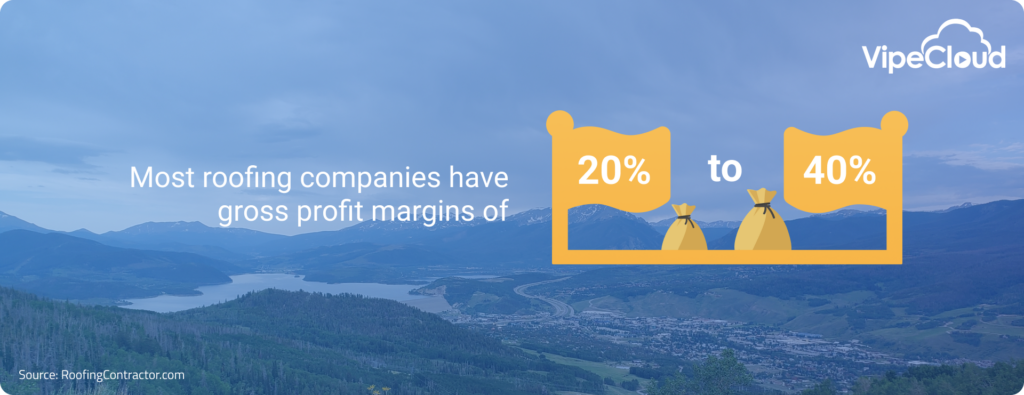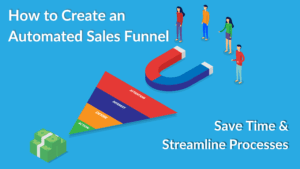Last updated on September 22nd, 2024

This guide will walk you through the 9 essential steps of starting a roofing company from start to finish.
So you want to start a roofing company?
Initiating your own roofing business is more than knowing how to lay shingles.
It's about piecing together a robust company and operations, one shingle at a time.
These 9 steps will give you an in-depth overview of how to get started:
- Step #1: Research And Planning
- Step #2: Legal And Administrative Process
- Step #3: Financial Management
- Step #4: Equipment And Resources
- Step #5: Human Resource Management
- Step #6: Marketing And Branding
- Step #7: Pricing And Estimating
- Step #8: Sales Strategies And Customer Relations
- Step #9: Ongoing Business Growth And Development
Step #1: Research And Planning
Starting a roofing business begins with diligent research and structured planning.
Thorough preparation helps smooth out potential bumps along the way and ensures that your foundation is solid enough to support sustainable growth.
Market Analysis
Analyze the local market before launching your roofing company.
A detailed market analysis enables you to predict challenges and seize opportunities more effectively.
Here are 3 steps to get started:
- Assess demand. Look for patterns in housing development, weather trends affecting roof repairs, or areas with older homes likely needing your services.
- Identify your ideal customer. Are you catering to residential clients, commercial businesses, or both? Understand their needs so you can tailor your offerings.
- Scope out seasonal fluctuations: Roofing demand changes with seasons, so plan accordingly.
Competitor Analysis
You don’t always want to copy everything your competitors are doing (because they might not know what they’re doing).
But analyzing these aspects of their business might give you further insights into what works in your market:
- Offerings - What services do your competitors provide? Are there gaps you can fill?
- Pricing models - Customers will likely compare your rates with the competition. So consider your competitions’ rates when pricing your services.
- Marketing - Analyze their websites, emails, ads, and customer reviews. Try to identify what seems to be working for them and try to do it better. Also, consider trying marketing tactics that your competitors aren’t currently using to stand out.
A competitor analysis will give you insights into how you can be uniquely positioned against your competitors.
Business Plan Development
Creating a business plan isn't just about jotting down goals — it's architecting the future of your company.
Be sure to:
- Create an elevator pitch so that you can quickly communicate the value of your roofing services to your prospects.
- Plan out how you'll position yourself amidst competition and what marketing strategies you’ll use to reach new customers.
- Plan detailed workflows and SOPs (standard operating procedures) – from sourcing materials to job completion.
- Create financial projections to predict revenues and costs – make sure numbers lead to profitability over time. Also, plan how you’ll get the cash to start (investors, loans, cash reserves, etc.)
Expect this process to be complex and time-consuming.
However, putting the work into planning your roofing company now will save you business disasters in the future.
Step #2: Legal And Administrative Process
Nobody wants to think of regulations and tax laws when starting a business.
However, this step is crucial to operating within the boundaries of the law, protecting your assets, and maintaining good standing with regulatory bodies.
Here’s what you need to understand about the licensing, insuring, and accounting procedures that’ll form the legal backbone of your business.
Note: This is just an overview. We recommend consulting with a lawyer and CPA to ensure your business is set up right.
Business Registration And Licensing
Before climbing ladders and replacing shingles, you'll need to address a key question: What do you need to start a roofing company LEGALLY?
The answer varies by location but typically involves several layers:
- Obtain a general business license. This allows you to operate a business in your city or county. It's the official nod from local government saying, "yes, you can start doing business here."
- Obtain a contractor's license. Roofing often requires a specific contractor's license, which might entail passing an exam and proving roofing work experience.
- Obtain any special permits. Depending on where you are and what services you offer, there may be additional permits needed for certain types of roofing materials or methods.
- Register your business. Make your business official and ensure no one else can legally use your brand name locally.
To pin down exactly what's required in your area:
- Visit municipal websites
- Contact local chambers of commerce
- Consult with other experienced roofing professionals
Securing these licenses proves credibility and competence.
It shows clients that you've met rigorous standards set forth by governing authorities.
Skipping this step risks hefty fines and undermines trust in your reputation.
Insurance Coverage
Now, let's talk protection — not just for roofs but for your entire operation.
Here’s what the kind of coverage you’ll likely need:
- Liability insurance - This cushions against claims if someone (not employed by you) gets injured or property is damaged due to your work.
- Workers' compensation - This is mandatory in many areas if hiring employees because it covers them if they're injured on the job.
- Property Insurance - This protects equipment and property from theft or damage.
Insurance policies widely differ, so connect with insurance agents who specialize in construction or trade businesses to customize your coverage based on potential risks associated with roofing businesses.
Tax Obligations And Accounting Systems
An essential part of running your back office operation is staying on top of your taxes — both paying what’s owed and taking advantage of deductions.
To do this, you’ll need to:
- Register for an Employer Identification Number (EIN) for tax reporting purposes.
- Determine if sales tax applies: Do roof repairs require sales tax collection in your jurisdiction?
- Set aside money regularly so that when tax time rolls around, payments don’t hit like hail during storm season.
To keep records straight:
- Choose user-friendly accounting software designed for small businesses
- Consider enlisting a CPA experienced with contracting companies
These 2 points are vital since accurate bookkeeping supports all financial decision-making.
Step #3: Financial Management
As a business owner, it’s your duty to ensure every dollar is properly allocated and that your company remains fiscally healthy.
These are the basics to keep in mind:
Budgeting And Financial Forecasting
Think of budgeting as plotting your route on a map.
It lays out where your funds will go and keeps spending in check.
Initially, create a startup budget covering equipment, licensing, insurance, marketing, and any initial hiring costs.
Then, forecast monthly operating expenses like salaries, supplies, vehicle maintenance, and office rent.
A good forecast estimates future sales volumes – which can be seasonally influenced in roofing – and forecasts both best and worst-case scenarios and
Make sure to:
- Use historical data. (If available from past projects or research industry standards.)
- Stay adaptable. Update your forecasts as real data flows in.
- Think long-term. A yearly forecast helps prepare for larger capital expenditures down the line.
Business Financing Options
While you can bootstrap your new roofing business, external financing can serve as an initial boost to get your roofing venture off the ground.
There are several avenues you can consider:
- Business Loans - Traditional banks offer loans but require strong credit histories.
- SBA Loans - The U.S Small Business Administration (SBA) provides loans that are often easier to qualify for than regular bank loans.
- Line of Credit - Useful for ongoing expenses rather than lump-sum purchases.
- Equipment Financing - Specific loans exist for purchasing essential equipment.
- Investors - While less common in trades like roofing, seeking angel investors or partnerships can work too.
When preparing your pitch or application for funding, be thorough by having clear projections and budgets and credible by showcasing your experience.
Step #4: Equipment And Resources
You'll need to gather the equipment tailored for various jobs, such as shingle application, metalwork, and waterproofing.
Essential Roofing Equipment
While not a complete list of tools, here are some of the essentials you’ll need:
- Ladders and scaffolding
- Roofing nailers
- Hammers and hatchets
- Utility knives
- Roofing shovels or tear-off tools
- Chalk lines
- Metal snips
Remember: Quality gear improves efficiency and helps ensure safety standards are upheld.
Managing Suppliers
Suppliers are critical for establishing an uninterrupted flow of materials — which keeps your business operations running smoothly.
Here are some pointers to get it right from the get-go:
- Establish relationships. Connect with various suppliers early on to compare services, delivery schedules, costs, and reliability. Build rapport so you can negotiate better terms as your business grows.
- Assess inventory needs. Understand what inventory gets used regularly versus seasonally to prevent stockpile surplus waste or running out at critical moments.
- Consider credit terms. Always know what credit facilities your supplier offers — this management aspect impacts cash flow significantly.
- Monitor supplier performance. Keep tabs on timely deliveries, quality of supplies received, flexibility during unexpected order changes, etc.
Step #5: Human Resource Management
Your employees are the backbone of your roofing business.
It's crucial to invest time and resources into assembling a skilled and reliable crew.
From their technical proficiency to their ability to interact positively with clients – the professionalism and expertise of your workers will reflect on your company's reputation.
Hiring Roofing Crew
Hiring the right crew for your roofing company is about matching skill sets with job requirements and ensuring that candidates align with your company culture.
However, keep in mind: Don't merely focus on experience.
Pay attention to attitude and willingness to learn – these attributes can be equally important in the long term.
- Define job roles. Clearly outline what each role entails (project managers, estimators, roof installers, sales reps, administrative staff, safety officers, QC inspectors, procurement managers, etc.).
- Source candidates. Utilize job boards, social media, local trade schools, or word-of-mouth to find applicants.
- Conduct interviews. Engage in face-to-face discussions that gauge competency and communication skills.
- Verify skills. Prior work references or practical demonstrations can confirm a candidate's capability.
Training And Certification
Once you have a crew assembled, ongoing training becomes key.
It assures projects are completed safely and effectively while promoting employee development.
Invest in your employees to improve customer satisfaction with these 3 tips:
- Conduct in-house training. Hold regular sessions to update crews on new techniques or refresh safety protocols.
- Partake in certification programs. Encourage employees to attain certifications such as GAF or CertainTeed credentials, which validate their expertise.
- Curate a continuous learning culture. A mindset where learning is part of the job profile encourages improvement and adaptability.
Training doesn't merely improve job performance – it demonstrates investment in your teams' personal growth.
Step #6: Marketing And Branding
Your brand and marketing are what separates your company in a crowded market.
Let’s run you through the basics.
Branding Your Roofing Company
Branding is more than just a memorable logo or catchy name (though these elements certainly don't hurt).
It's about embedding your company's ethos into every facet of operation and communication.
To do this, make sure you:
- Develop a strong brand identity. What feelings do you want to invoke in your clients when they think of your company? Trustworthiness, reliability, superior craftsmanship?
- Create a memorable logo and tagline. You want your company’s visual stamp to be everywhere, from your website to work uniforms, and recognizable and reflective of your brand.
- Use consistent messaging across all platforms. Keep your company mission and values consistent across marketing materials and client communications so people immediately connect your brand with quality roofing services.
Online Presence
Today, establishing an online presence is no longer optional – it's essential.
You need your company to show up when people search for your company and services.
These are the basics to get you started:
- Launch a website. Create a website that allows leads to quickly get the information they need before reaching out to you. Make sure the design is clean and easy to navigate.
- Maintain a presence on social media platforms & directories. Make sure your business is also findable on Facebook, Google Business, Angi, Nextdoor, and other platforms where leads look for roofers.
- Optimize for search engines with SEO. Optimize your website, social profiles, and Google Business Profile around keywords related to the roofing services you offer.
Traditional Marketing Strategies
Digital marketing tactics are the hot new thing. But chances are your competitors are still growing by word of mouth and other traditional marketing tactics.
Encourage your happy customers to send you referrals, hand out personalized business cards & flyers, consider paying for local newspaper ads, and sponsor local events.
These tips aren’t anything new, but they’re not losing their effectiveness anytime soon.
Step #7: Pricing And Estimating
This segment of your business plan demands attention to detail and an understanding of costs – to remain competitive and ensure profitability.
We’ll dissect the intricacies of evaluating costs and profit margins, followed by illustrating the core techniques for reliable estimating.
Evaluating Costs And Profit Margins
Evaluating the costs associated with starting and running your roofing company is indispensable.
Here’s a basic overview of expenses to keep in mind when trying to forecast your profits:
- Material costs - Shingles, underlayment, flashing, nails, and other materials.
- Labor expenses - Salaries and commissions for your skilled laborers, reps, and other staff.
- Operational overheads - Office rentals, gas, utilities, marketing efforts – all recurring expenditures belong here.
- Equipment and transportation - The cost of things like ladders, scaffolding, safety gear, and trucks are calculated into total expenses.
To determine your profit margins, set service prices that cover these costs while leaving room for financial gain.
Most roofing companies work toward gross profit margins ranging between 20% to 40%, although this can vary based on your region's economic climate, competitive landscape, and organizational structure.

Creating accurate job quotes becomes easier when you pinpoint each project component's cost.
Estimating
To reliably estimate project costs and propose fair yet profitable customer quotes:
- Thoroughly inspect sites. Pre-quote inspections uncover potential issues affecting labor or material needs.
- Use software. Leverage software designed specifically for quote calculations in the roofing industry.
- Include contingencies. Factor in an additional percentage (commonly around 10%) for unforeseen circumstances.
- Understand lifecycle costing. Take into account immediate expenses and warranty coverage periods, which might impact long-term profitability.
- Reflect market rates. Ensure your estimates are in line with local standards without undercutting value.
Each technique serves as a guideline, helping you provide consistent estimates that protect both client interests and your own bottom line.
Step #8: Sales Strategies And Customer Relations
The way you handle roofing sales and interact with your customers can make or break your new venture.
This section will explore roofing sales approaches and customer relationship management.
Sales Techniques For Roofing Services
Always consider three core principles: trust, credibility, and value.
Your potential customers must have faith in the quality of materials and in your expertise to deliver exceptional workmanship.
- Educate your prospects. Instead of going straight into selling mode, educate them about their options. Help them understand what factors should influence their decision-making process, such as material choices, durability, warranty periods, and maintenance needs.
- Offer choices. People love choices but not too many — just enough to feel they're getting a tailored service without being overwhelmed by complexity.
- Create detailed proposals. Give clear and detailed quotes that explain costs transparently so potential clients know precisely what they’re paying for.
- Be available for queries. Make prospects perceive you as reliable by addressing queries promptly. Quick response times convey care and professional dedication.
- Follow-up without pestering. Learn when to follow up – without coming across as pushy. It’s an art that can significantly boost closing rates.
Customer Relationship Management
Relationships with customers don't end once a deal is sealed – it's a continuous commitment starting from first contact all through after-service care.
Here are 3 musts for maintaining valuable and long-lasting customer relationships:
- Seek feedback actively. Post-job evaluations give critical insights into areas requiring attention or improvement. (Also, it shows your customer that you care.)
- Maintain contact post-service. Even after project completion, reach out occasionally via email newsletters or greetings during holidays to keep your brand top-of-mind.
- Implement roofing CRM software. Invest in Customer Relationship Management software to track customer interactions, communications, and projects so no customer needs slip through the cracks.
Step #9: Ongoing Business Growth And Development
Embarking on the journey of how to start a roofing business is but the opening chapter. Guiding your enterprise to continual progress demands vigilance and dedication. Growth and development are not just goals; they're ongoing processes that require constant attention and refinement.
Monitoring KPIs
KPIs (Key Performance Indicators) give you insights into how your business is performing financially and with customers.
Most of the KPIs you should be tracking will be in your CRM reports and accounting software.
Track KPIs that gauge the health of your:
- Financials
- Operational efficiency
- Customer satisfaction
- Employee performance
Digging into these details empowers you to pivot swiftly when necessary.
Continued Professional Development
Continual professional development ensures both you and your team stay ahead of emerging trends, techniques, and regulations.
This means you should continuously:
- Engage in Educational Workshops or webinars relevant to roofing innovations.
- Invest in Technical Training for new materials or equipment that enter the market.
- Foster a culture of growth by encouraging certifications through organizations like the National Roofing Contractors Association (NRCA).
In The Market For A Roofing CRM?
Your roofing CRM software should be at the center of your operations.
Sure, you can use spreadsheets to manage customers when you’re just starting out.
But tracking data in spreadsheets is prone to manual errors and won’t scale as you grow.
On the other hand, most roofing-specific CRMs are flat-out expensive.
VipeCloud is an affordable CRM that gives you the valuable automation capabilities you need to grow your roofing business.
Want to give it a go? Start a free 15-day trial today.
Or, if you prefer to have one of our CRM pros walk you through how you can use CRM in your business, schedule a demo.




Leave a Reply